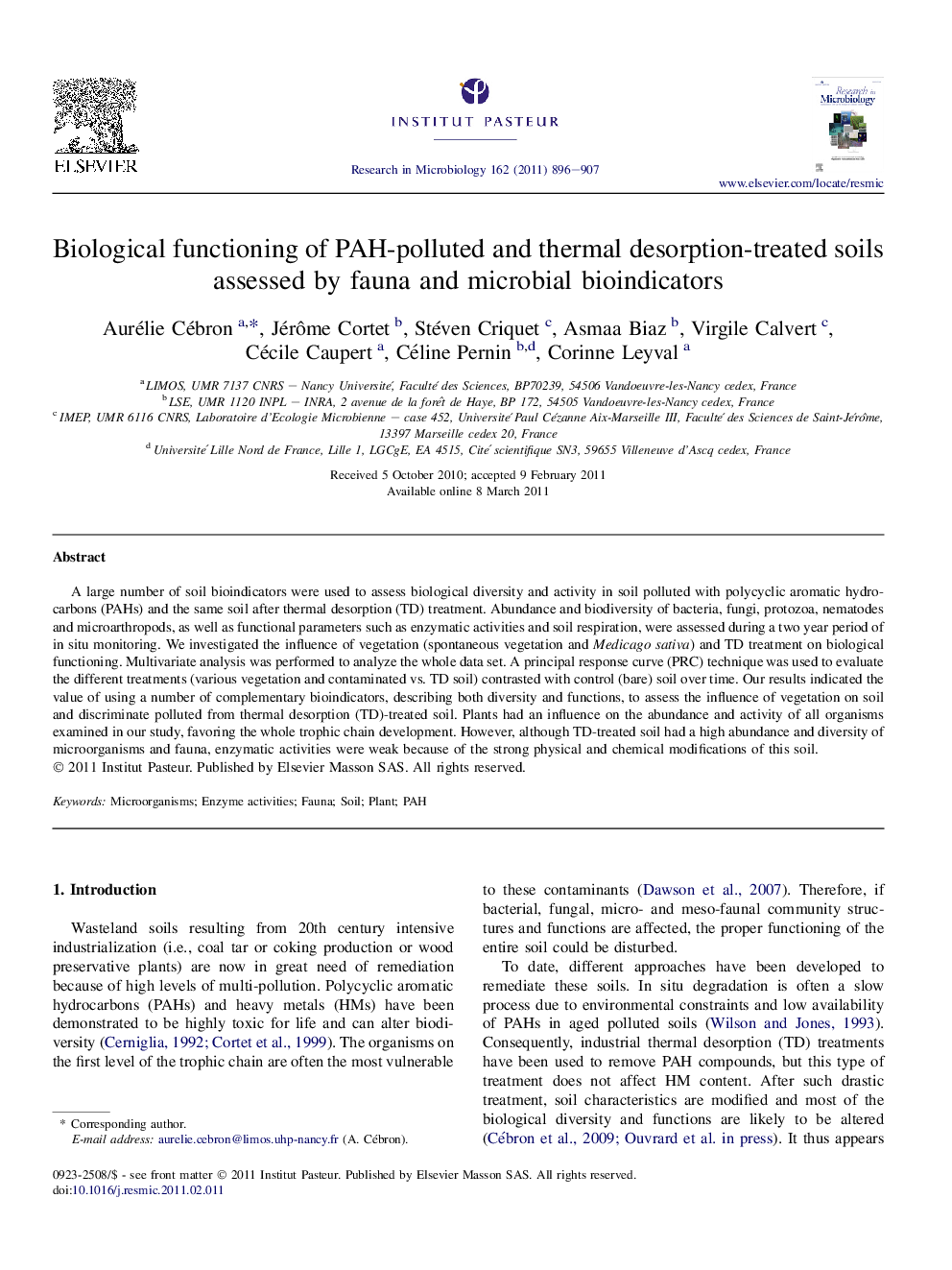| Article ID | Journal | Published Year | Pages | File Type |
|---|---|---|---|---|
| 4358995 | Research in Microbiology | 2011 | 12 Pages |
Abstract
A large number of soil bioindicators were used to assess biological diversity and activity in soil polluted with polycyclic aromatic hydrocarbons (PAHs) and the same soil after thermal desorption (TD) treatment. Abundance and biodiversity of bacteria, fungi, protozoa, nematodes and microarthropods, as well as functional parameters such as enzymatic activities and soil respiration, were assessed during a two year period of in situ monitoring. We investigated the influence of vegetation (spontaneous vegetation and Medicago sativa) and TD treatment on biological functioning. Multivariate analysis was performed to analyze the whole data set. A principal response curve (PRC) technique was used to evaluate the different treatments (various vegetation and contaminated vs. TD soil) contrasted with control (bare) soil over time. Our results indicated the value of using a number of complementary bioindicators, describing both diversity and functions, to assess the influence of vegetation on soil and discriminate polluted from thermal desorption (TD)-treated soil. Plants had an influence on the abundance and activity of all organisms examined in our study, favoring the whole trophic chain development. However, although TD-treated soil had a high abundance and diversity of microorganisms and fauna, enzymatic activities were weak because of the strong physical and chemical modifications of this soil.
Related Topics
Life Sciences
Immunology and Microbiology
Applied Microbiology and Biotechnology
Authors
Aurélie Cébron, Jérôme Cortet, Stéven Criquet, Asmaa Biaz, Virgile Calvert, Cécile Caupert, Céline Pernin, Corinne Leyval,
